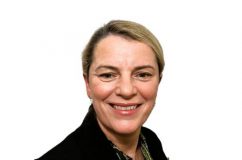How eHealth could contribute to both health and wealth
Toggle
As people live longer, the global population over 60 is expected to increase from 287 million in 2013 to 417 million in 2050, and then to 440 million in 2100. Ireland, among other countries, will struggle to provide public healthcare services in the face of massive increases in demand.
That said, the rapidly growing field of eHealth technology will help to change the way care is delivered but before diving into the why, it's worth explaining what eHealth is.
eHealth brings together cutting-edge technology, best practice healthcare programmes, and modern management approaches to deliver or improve healthcare through the Internet and related technologies.
It's a change in mindset where healthcare is delivered in non-hospital settings and where we as citizens take responsibility for managing our own health.
It uses data to facilitate and financially reward prevention rather than cure - for example, an insurance company reduces premiums for customers who wear an exercise tracker and meet target exercise levels.
A diabetic patient tracks their insulin levels using a glucometer that automatically sends these details to their doctor who adjusts their prescription in real time. House-bound patients remotely consult their doctors from home via their phone or computer.
In March 2015, the Health Service Executive (HSE) was undergoing reforms including integration of care across community, primary care, mental health and acute sectors, the reconfiguration of hospital groups and the development of community healthcare organisations.
This all needed to be delivered while ensuring health, wellbeing, and patient safety. The Department of Health believed that eHealth could help and the Irish Government had issued a declaration to that effect during its EU Council Presidency in May 2013.
eHealth ecosystems could contribute to both health and wealth - leveraging healthcare spend to drive economic growth while more effectively allocating healthcare budgets. An eHealth ecosystem could co-ordinate policy, promote learning, facilitate innovation, and bring products to market more quickly.
The HSE therefore invited tenders to establish an eHealth ecosystem bringing together academia, industry, hospital groups, primary care and social care to advance eHealth.
This ecosystem launched in June 2015 and although multiple eHealth-related networks existed, the ecosystem was the only government-sponsored network that explicitly included patients as members.
This reflected Ireland’s eHealth strategy’s intent to define it as patient-centric. Ecosystem meetings provided speaker opportunities for patients, and patient representative organisations helped set ecosystem agendas.
Over the following year, the ecosystem met five times. The ecosystem’s positive atmosphere towards the HSE eHealth team contrasted starkly with negative media, political, and general public discussion of the wider HSE (over that same year 9,289 complaints were made about HSE services, up 11% on the previous year).
Whole meetings were dedicated to success stories such as 'The Lighthouse Projects' meeting in March 2016, and the '12 Months On' meeting in June 2016.
In the real-world, technology firms who were trying to sell eHealth products directly to the consumer cried out for change: they needed people to make their own health management decisions, not relying solely on the doctor.
At one EcoNet event, a patient described her difficulty in seeking a diagnosis for her son – a process that took 14 years. Another patient spoke of the importance of stakeholder collaboration using examples from her experiences as a patient and carer to three children with complex conditions. Both created awareness of the patient experience for commercial and healthcare provider organisations.
While the eHealth strategy aims to place the patient at the centre of the Irish healthcare market, it is only when a real-life patient stands up and speaks at an ecosystem event that the over-reliance upon the doctor in Irish healthcare can be seriously challenged.
Over 160 health professionals, health researchers, industry leads, policymakers, patient group representatives, and service users attended the Ecosystem’s one-year anniversary.
A government speaker spoke of a laboratory software roll-out that had been jointly led by clinical and ICT staff, was available to all hospitals and primary care, was patient-centred, and was jointly provided by a variety of software, platform and service vendors.
The ecosystem agenda is now set by representatives from academia, the Department of Health, HSE, patient representative organisations, and industry.
The patient increasingly participates in their own care – as in a pilot Patient Education Programme led by the Irish Platform for Patient Organisations, Science & Industry. Similarly, Tallaght hospital, one of Ireland’s largest hospitals, recently rolled out Ireland’s first Patient Engagement mobile application.
eHealth will become a more vital component in our future health systems. While there is much more to do, the Irish Government, in both its statements and actions, is helping the patient to play a new role. The ecosystem means that this change is not just felt in the management of our own care – it ripples beyond to a new influence on the planning and management of our healthcare services.
